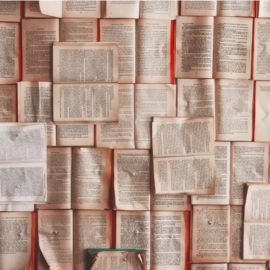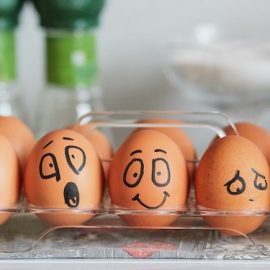

This article is an excerpt from the Shortform book guide to "Hyperfocus" by Chris Bailey. Shortform has the world's best summaries and analyses of books you should be reading.
Like this article? Sign up for a free trial here .
What is information chunking? How does it relate to creativity and learning?
Your brain has a tendency to chunk related bits of information together. When you understand how this process works, you can leverage it to enhance learning and stimulate creativity.
Here is how information chunking works.
How Information Chunking Works
Chris Bailey explains how learning and creativity relate to the information chunking process in your brain. Whenever you encounter a new stimulus, your brain stores this information in what Bailey refers to as a “dot.” We’ll call them bits. Your brain treats each bit differently based on two major factors: what it is and what you already know about it.
When you learn, you connect a new bit to the bits you already know. In other words, you always interpret information based on your personal background. For example, a chef might look at a meal and think about how it was made. An environmentalist might look at the same meal and consider the environmental costs of all of its ingredients. (Shortform note: This connection can occur unintentionally—you smell a stranger’s cologne on the street and suddenly think of your first love. It can also occur deliberately, which many memory techniques use to their advantage. They make you connect new information to information you already know because the more connections a bit has in your brain, the more likely you are to remember it.)
Bailey explains that when you learn related bits, you join them together in a “cluster,” or chunk. The more bits you gather, the denser each chunk becomes. And the more chunks you gather around a topic, the more of an expert you become.
As an example of the information chunking process, think about learning to drive a car with a manual transmission: To shift gears, you have to push in the clutch, move the stick to the right position, and keep the engine RPMs in the right range while you let the clutch back out. You also have to control the steering wheel, operate the brake, keep track of your speed, and so forth.
Initially, your brain treats each of these elements separately. Since only a few items fit into your working memory simultaneously, driving takes up all of your attention. However, once you learn to drive a stick-shift, you don’t think specifically about all these little tasks. You just think, “I need to drive to the grocery store,” and pretty soon you’re cruising down the road in third gear, without any conscious recollection of how you shifted from first gear into second or second into third. This is because your brain has condensed all the little tasks into a single chunk of information that you can use intuitively.
This single chunk becomes one of the things that your brain is paying attention to. Since all of the initially separate bits are now condensed into one, it requires less working memory, so we regain room in our working memory and thus the ability to pay attention to more items—like the radio in the car.
(Shortform note: In A Mind for Numbers, Oakley describes this exact process. She also explains that the more often you access a chunk, the stronger connections it has and the more it sticks in your memory. This is one reason why it’s essential to regularly review any information you study.)
This isn’t to say that you remember every piece of information that you ever learn. This is thanks to sleep, which purges unimportant bits from your short-term memory and moves important bits into long-term storage.
Just like learning, creativity also involves connecting clusters and bits together. But when you learn, you connect related ideas together. Creativity involves connecting disparate ideas together. This is why intentional mind-wandering often leads to moments of inspiration: By not focusing on anything in particular, our brains randomly look for connections between bits. When it arrives at one, you gain a new, creative insight.
(Shortform note: Most people assume that creativity is only necessary in the arts. But the researchers behind one study that found that mind-wandering increased creativity posit that mind-wandering is so common because it was useful in ancient times: We found creative solutions that helped us survive thanks to mind-wandering.)

———End of Preview———
Like what you just read? Read the rest of the world's best book summary and analysis of Chris Bailey's "Hyperfocus" at Shortform .
Here's what you'll find in our full Hyperfocus summary :
- Why it's just as important to learn how to manage your attention, along with your time
- Why you still feel tired no matter how many breaks you take
- Strategies for managing your attention for better productivity and creativity






